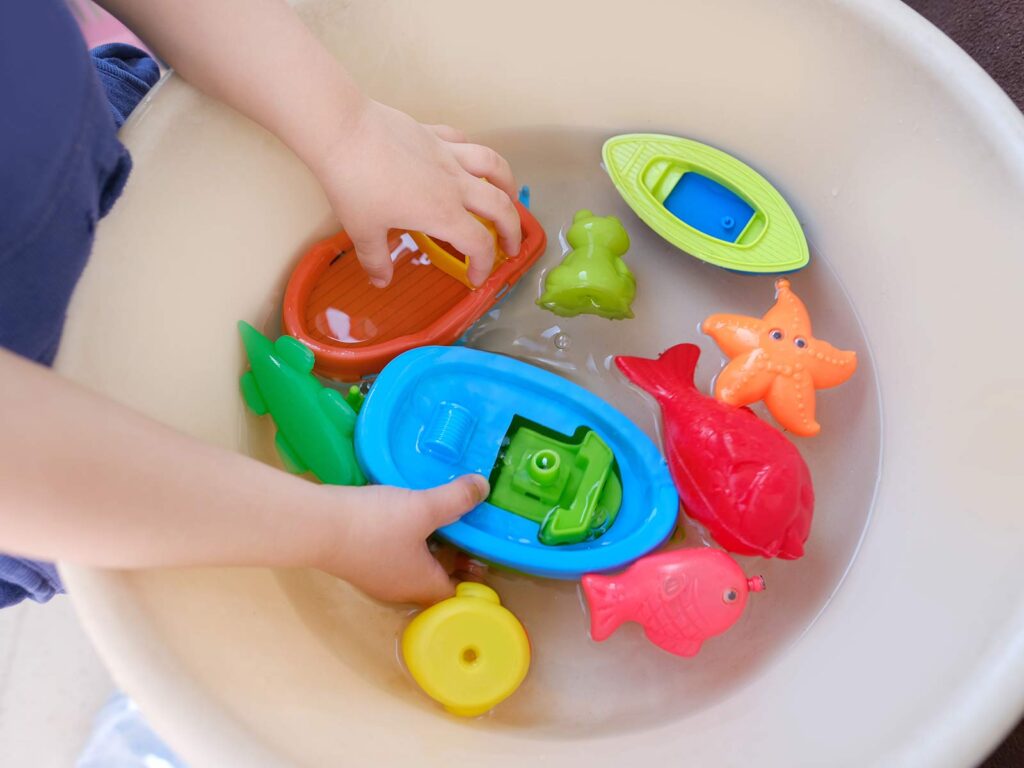
Looking to teach your kids some cool things about water? Look no further than this simple activity where we look at buoyancy and what affects it!
What you’ll need:
- A large container or bowl
- mall items (paperclips, a rubber duck, a cork, a rock, blocks, a feather, etc.)
- Water
- Paper & pencil
What to do:
- Fill the bowl or container with water.
- Have your child make predictions for each small item you selected. Will the items sink or float? Write down their predictions.
- Have your child place each item gently in the water, taking note of how heavy it feels and then whether it sank or floated.
- Discuss your findings. What made the objects sink or float? Was it the shape? The weight? What do the items that floated have in common, and what do the items that sank have in common?
The Science Behind the Experiment:
- Buoyancy is the ability to float in water, air or some other fluid. If the force pushing the object up (buoyancy) is greater than the force pushing it down (gravity), then the object will float. If it’s less, it will sink! Whether or not an object is buoyant relies on two factors: density & volume.
- Density is a measurement of how tightly matter is packed together. An object with higher density is usually heavier and is more likely to sink.
- Volume also affects buoyancy! Volume is the amount of space an object occupies. When as object’s volume increases, it’s buoyancy also increases. This is why large ships don’t sink into the sea, even though they are very heavy!
You can see buoyancy, density, and volume are all related, and a cool science lesson for any kid!
